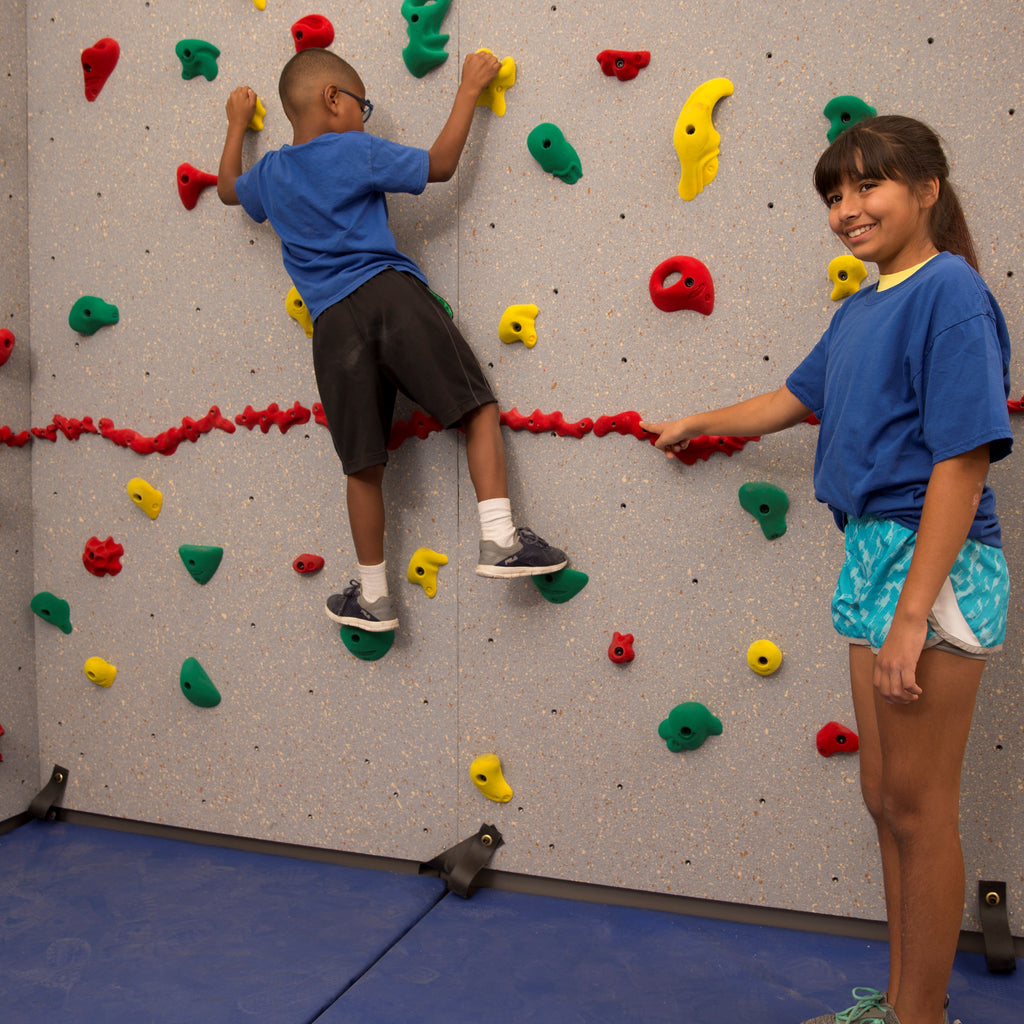
30 Traverse Wall® Tips
In 2021, as part of the celebration of our company’s 30th Anniversary, we put together 30 Traverse Wall® tips – one tip for each year we had been in business. We thought it was time to re-share these tips to help you implement some new ideas and practices into your climbing program. Be sure to check the hyperlinks for additional information related to some of the tips. Please add your favorite tips in the comments!
- Safety mats should be in place before anyone climbs.
- Climbers should always be supervised.
- Introduce new climbers to the climbing wall and ease any apprehension with these tried and true beginner climbing wall activities.
- Climbers’ feet must remain below the Red-Relief™ Line (or a specified distance from the mats).
- When the climbing wall isn’t being used, it should be closed and locked to prevent unsupervised use.
- Make the most of our color-coded hand holds by letting climbers know about them so they can choose their challenge.
- Space climbers about 4 feet apart, or one climber per 4-foot-wide climbing wall panel.
- Help keep hand and foot hold cleans by placing door mats on either side of the climbing wall for climbers to wipe their feet before they climb. Also, have them wash hands before climbing or provide wipes for use before climbing.
- Climbers should step down when finished climbing – no jumping! Our Up & Down Relay Race helps reinforce this safety rule.
- Number each climbing panel at the top. This allows you to assign climbers to a specific panel and they can start climbing there, some at the beginning of the wall, some in the middle and some at the end instead of lining up and starting one at a time.

- Climbers should let supervisors know if a hand hold is loose and spinning. This is the most common maintenance issue with a Traverse Wall® and is very easy to remedy with a few turns of an Allen wrench. Please refer to our hand hold installation instructions.
- Vary the type of climbing wall activities that you host to provide diverse experiences that will help engage all climbers and develop skills. Check out our individual challenges, cooperative challenges and competitive climbing games.
- Never allow climbers to climb over, under or around each other.
- Add inspirational and positive messaging on or near your Traverse Wall® to encourage climbers to succeed and support each other.
- Assess climbers using self-assessments and peer assessments.
- Vary the direction that climbers move by starting climbing activities from either side of the wall, not always from the same side. Traveling from left to right and right to left gives climbers the opportunity to lead with both sides of the body.
- Add reflection and journaling to your climbing program to maximize the social-emotional benefits of rock climbing.
- The climbing wall can be used in its entirety or in sections (half of wall, third of wall or single panel section). Use cones or tape to mark the sections and have partners or small groups climb in each section. Climbing Wall Twister® is a great partner activity for single panel sections and Add On is fun for small groups on several panels of the climbing wall.
- Periodically clean your climbing wall.
- Review the pros and cons of spotting and determine if it’s something you should add to your program.

- Add accessories to your climbing wall to bring new challenges for your climbers to try.
- Keep learning and trying new activities with your climbers. Check out our on-demand webinars.
- Have your climbers set goals on the climbing wall.
- Change the location of the hand holds, also known as route setting, to keep the climbing experience fresh and challenging.
- Share your climbing wall for classroom learning and with educators & staff and family & community.
- Use the climbing wall as a station, along with other stations, to maximize moderate to vigorous physical activity.
- Understand proper form and directly teach climbing techniques to help your climbers advance their climbing skills.
- Use your climbing wall as a fundraising tool to raise funds for climbing wall accessories or other needs in your program.
- Be sure your understand all the parts of your climbing wall, especially if you inherited your wall.
- Join our climbing community on social media to connect with other climbing wall supervisors and learn about their climbing programs and how their climbers are benefitting.

Leave a comment